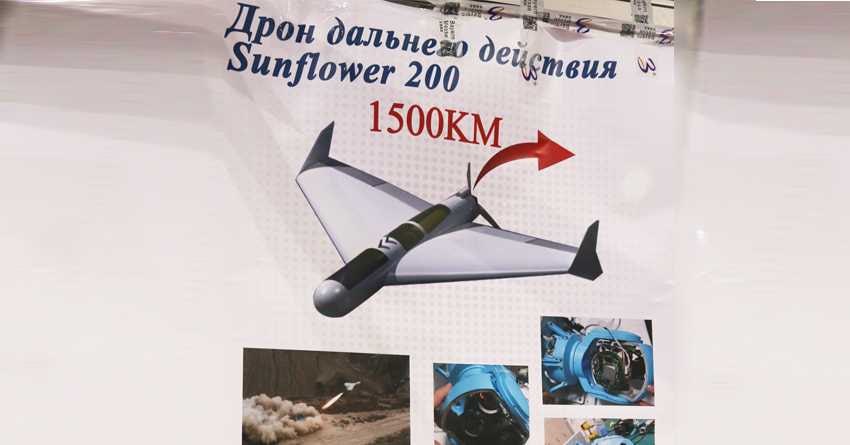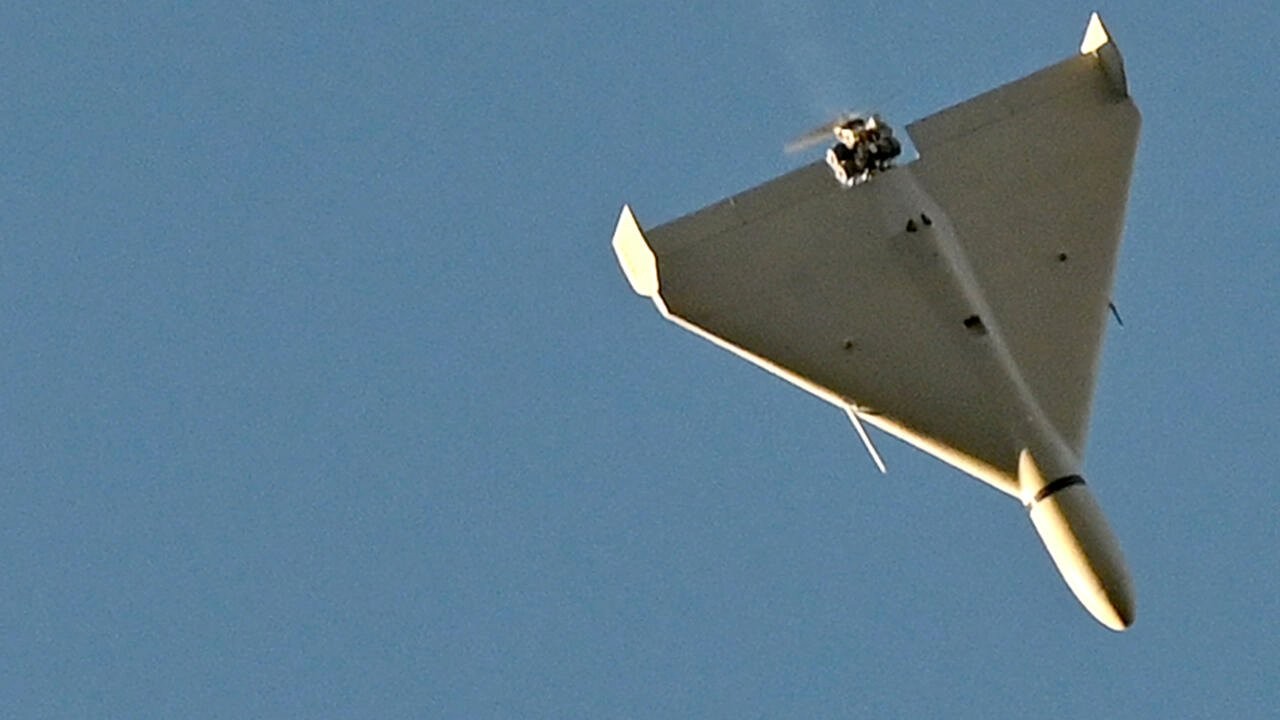
Tuesday, September 12, 2023
Stunningly Similar To Shahed-136 Suicide Drone, Chinese ‘Replica’ Of Iranian UAV Surfaces
By Parth Satam
-September 12, 2023
Videos have emerged of a Chinese version of Iran’s famous Shahed-136 kamikaze drone, the Sunflower-200, being tested at firing ranges in China. This has given rise to speculation that Russia’s attempts to streamline the production of its analog, the Geran-2, might soon be bolstered.
Russia has begun employing Geran-2 (the shorter name for Geranium-2) since September last year in Ukraine to target energy and power generation infrastructure. It fires the Geran on civilian-military facilities in coordination with other missile attacks like the Iskander, Kh-101, or Kalibr, swarming Ukraine’s Western-origin Air Defense (AD) systems.
The Sunflower-200 was first unveiled at the latest Armiya-2023 exhibition held in Russia recently, with a shape strikingly similar to the Shahed and Geran. EurAsian Times recently reported how Iran has emerged as a significant drone power, with Iranian officials claiming even European countries are showing interest in its civilian and military unmanned aerial vehicles (UAV).
Therefore, the emergence of a Chinese version demonstrates the proliferation of drone technology between countries the US and West have a hostile relationship with.
Looks & Flies Like Shahed-136
The videos and pictures showed that the Sunflower-200 is a direct copy of the Shahed-136, with similar capabilities and intended roles. One video shows the aircraft on a rail launch platform with the propeller running and then suddenly jettisoned by a rocket booster, which then falls off.
Another video showed the drone launched similarly from an airfield on a large mountain overlooking a valley. The UAV then nosedives and strikes a target on the ground. These are test videos made by the Chinese manufacturer to advertise their product on social media.
A Telegram group that carried the two videos had the message: “Some beauty from Chinese manufacturers. Orders are accepted.”
Kinematic Performance
Posts on X (formerly Twitter) said the Sunflower’s launch weight is 175 kilograms, as against the 240 kilogram weight of Shahed-136. This allows the drone to take off more quickly or even vertically. It could also have to do with the newer generation of lighter composite materials and a better, more powerful Chinese engine, both areas where China has a significant techno-industrial capability.
The Sunflower-200 is also declared to have a 3.2 meters (10 feet) long fuselage, a 2.5 meter (8 feet) wingspan, and a warhead of 40 kg. Different sources mention the attack range of 1,500 or 2,000 kilometers, while the cruising speed ranges from 160 to 220 km/h.
These specifications are more or less similar to those featured by Shahed-136, which also carries the name of Geran-2 in Russia.
Iranian Drone with Russian & Chinese Copies
The Chinese drone firm could be an entirely private company outside its state-owned defense industrial and academia apparatus, not restricted from selling to any international customer.
This is much like China’s DJI, the world’s largest manufacturer of the most advanced commercial leisure drones, used by both the Ukrainian and Russian militaries for routine battlefield surveillance, reconnaissance, and artillery fire correction roles.
This is despite DJI banning their sales to Ukraine. Therefore, it was concluded that other third-party buyers, like dealers and distributors, were purchasing the drones and selling them to these countries.
The fact that the UAVs were displayed in the Armiya-2023 exhibition means there could be some low-level Chinese and Iranian technical cooperation, possibly with Russian intermediation — or the other way round.
This also does not imply China is arming Russia against Ukraine — a claim often made by Western media. The Shahed’s rebirth, now as a Chinese analog, is more a result of the Iranian aircraft’s success as a cheap, mass-produced yet effective loitering munition that serves as an alternative to exorbitant Western weapons while also leaving significant technical room for customization, modifications, and upgrades.

A poster of the Sunflower-200, presumably at the Armiya-2023 defense exhibition in Russia.
Russia and China have well-developed defense industries, and neither expects the other to arm on their behalf, except for political solidarity of sharing hostility towards the West.
Russia and China have well-developed defense industries, and neither expects the other to arm on their behalf, except for political solidarity of sharing hostility towards the West.
Improved Chinese Drone a Threat for Ukraine?
It is unknown if the Chinese manufacturer had offered the drone to Russia during the military-tech event. However, the fact that such an alternative to the Iranian weapon appeared in Russian defense exhibitions could mean a significant threat to Ukraine.
For one, being a Chinese product, the UAV can be expected to have better electronic-electrical circuitry and components — areas where Russian and Iranian defense industries have poor self-reliance. Meanwhile, manufacturing electronic and computer hardware represents China’s industrial and technological growth over the last 30 years, becoming the “world’s factory” of big and tiny electronic and mechanical goods for all major companies.
In other words, the Sunflower-200 is ahead in many respects of the original Iranian Shahed-136 and its Russian version, Geran-2.

Iranian Shahed 136 drone
Apart from directly buying the ready-made explosive drones, Russia can also try and source components for their own Geran-2 production that has been established on the territory of the Russian Federation and has already brought the first drones for the strikes on Ukraine.
The factory in Alabuga set up for manufacturing the Geran-2, featured in a previous Washington Post (WaPo) report and further analyzed by EurAsian Times here, showed that its managers were directly coordinating with their Iranian counterparts in sourcing spares and engines.
This means the factory has enough autonomy in making plans to increase production and deliver advanced variants. Naturally, this would not stop it from collaborating with the Chinese firm, buying electronics, components, and advanced circuit boards for its Gerans.
Such deals do not require state-level clearances or represent strategic defense manufacturing alliances and can easily be viewed as a simple commercial-business deal between two companies.
Apart from directly buying the ready-made explosive drones, Russia can also try and source components for their own Geran-2 production that has been established on the territory of the Russian Federation and has already brought the first drones for the strikes on Ukraine.
The factory in Alabuga set up for manufacturing the Geran-2, featured in a previous Washington Post (WaPo) report and further analyzed by EurAsian Times here, showed that its managers were directly coordinating with their Iranian counterparts in sourcing spares and engines.
This means the factory has enough autonomy in making plans to increase production and deliver advanced variants. Naturally, this would not stop it from collaborating with the Chinese firm, buying electronics, components, and advanced circuit boards for its Gerans.
Such deals do not require state-level clearances or represent strategic defense manufacturing alliances and can easily be viewed as a simple commercial-business deal between two companies.
Just proves that China is stunningly good a copy catting other people's technology.
ReplyDeleteHardly any original breakthrough technology comes out from Communist China.
Taiwan -YES
Wakakakaka…
DeleteWow… wow…
Sleep tight & loosen yr knotted undie to continue yr fart chamber dream!